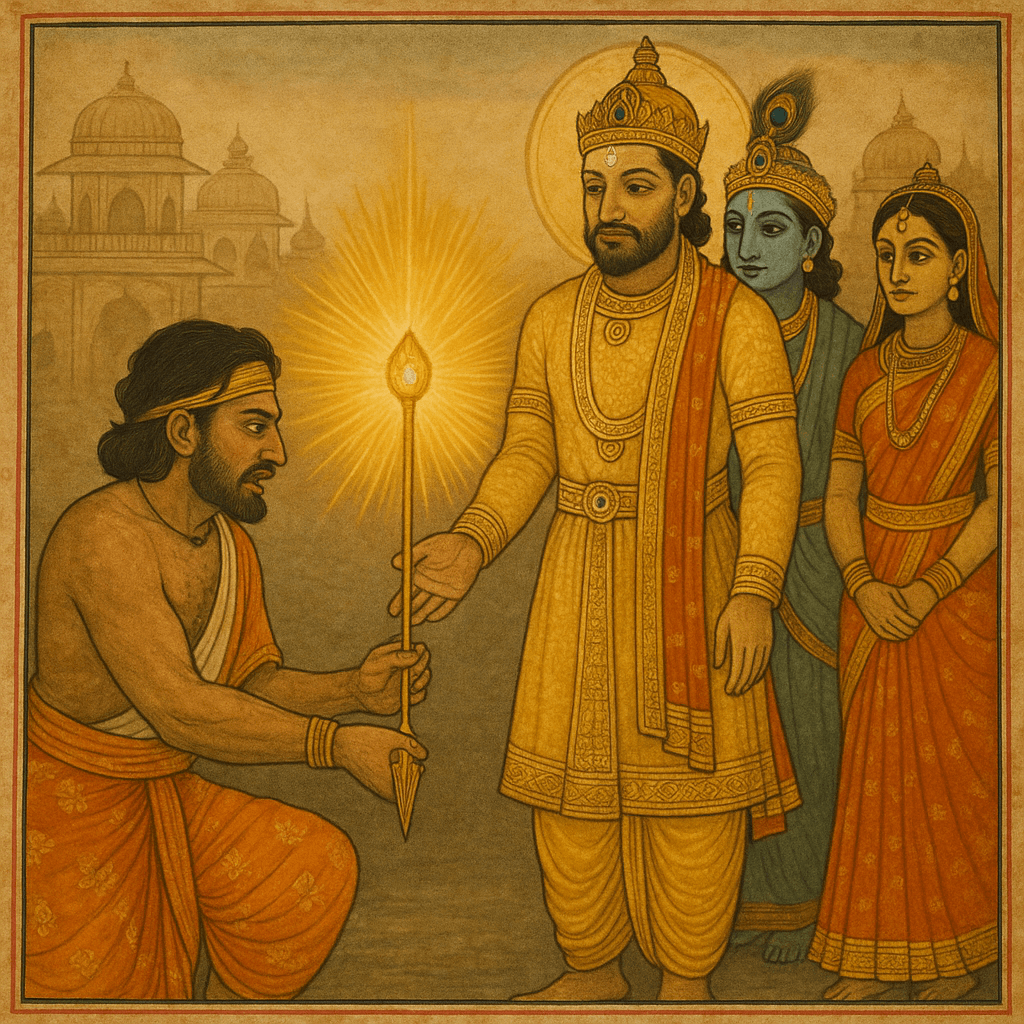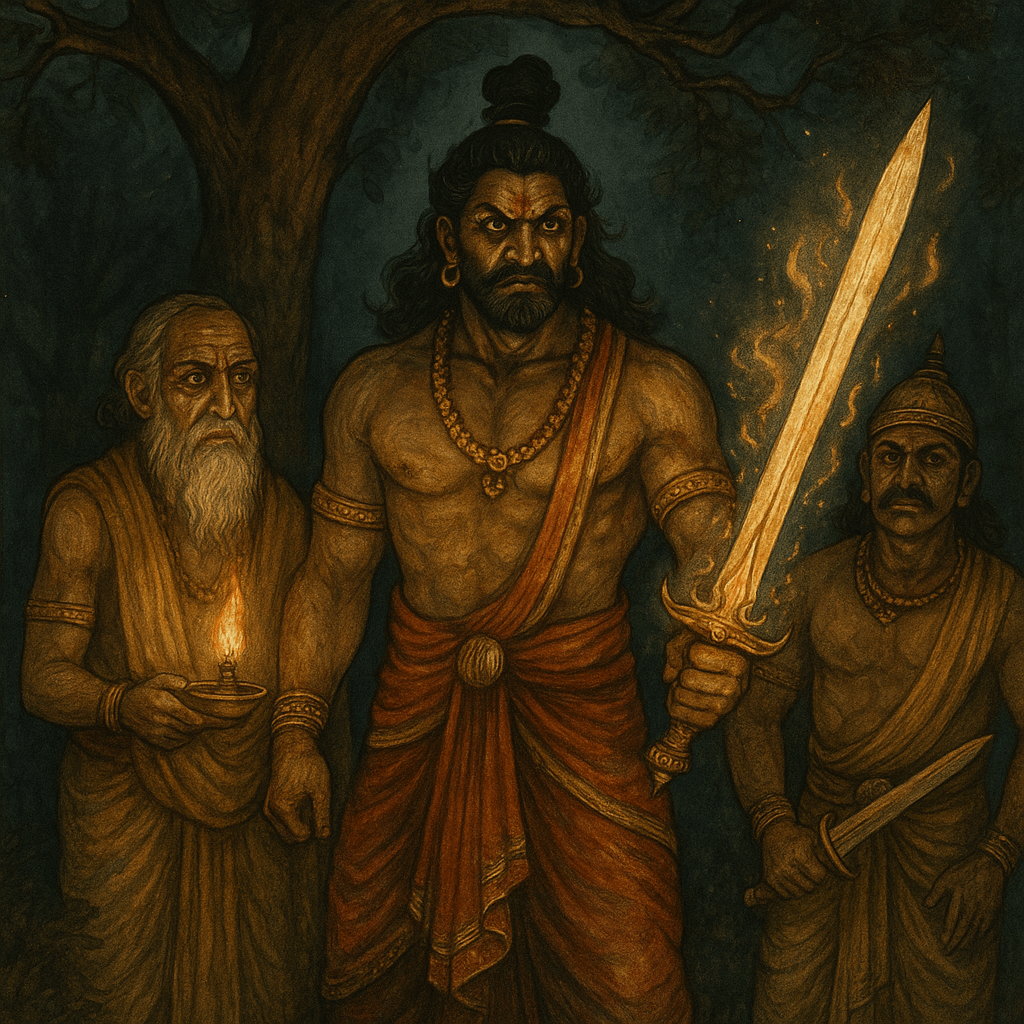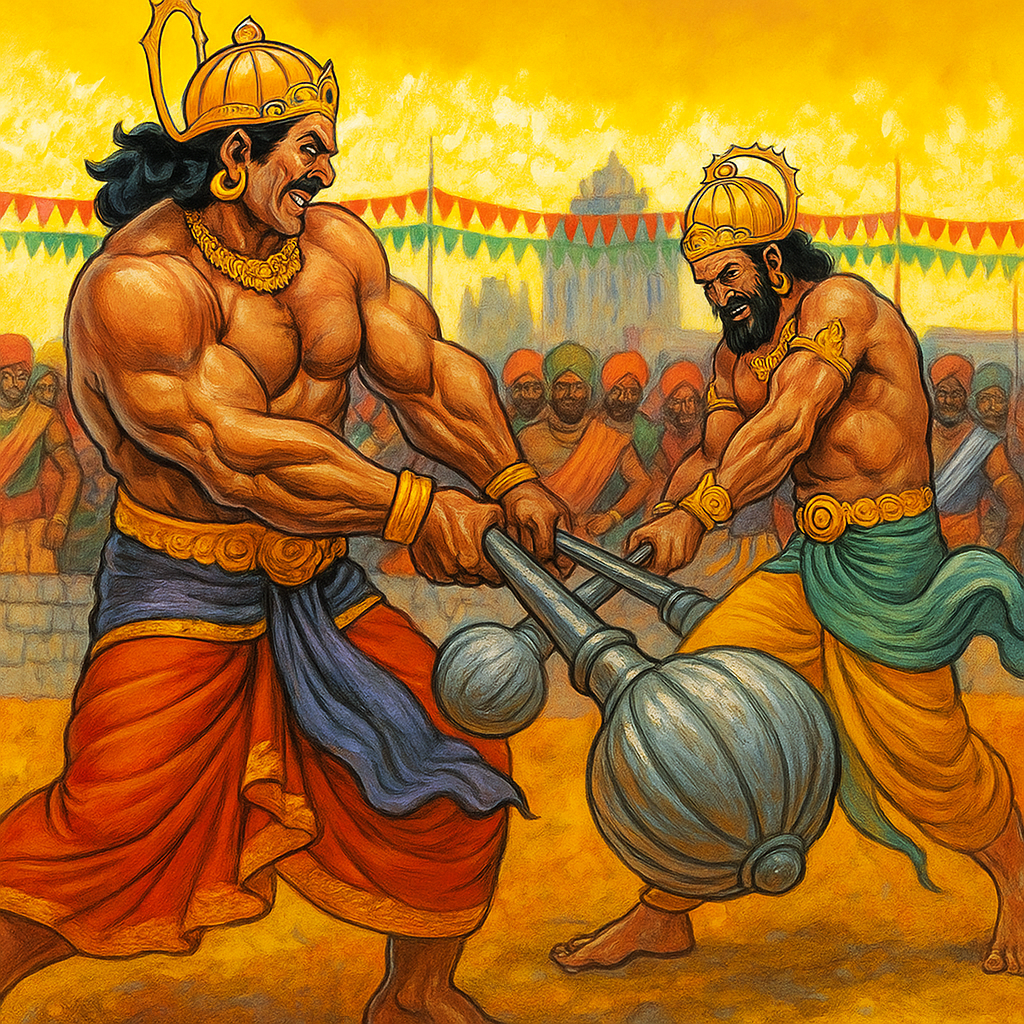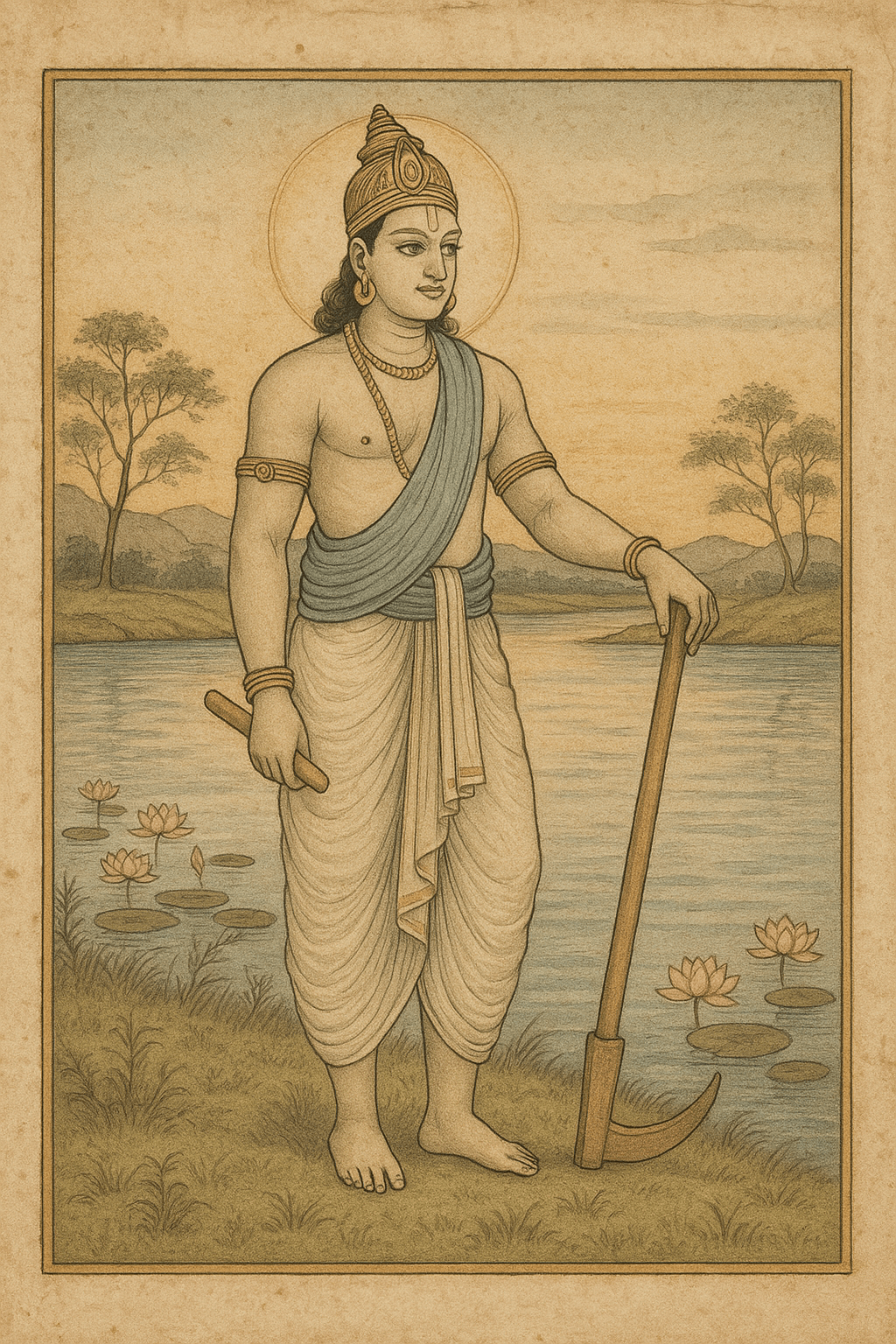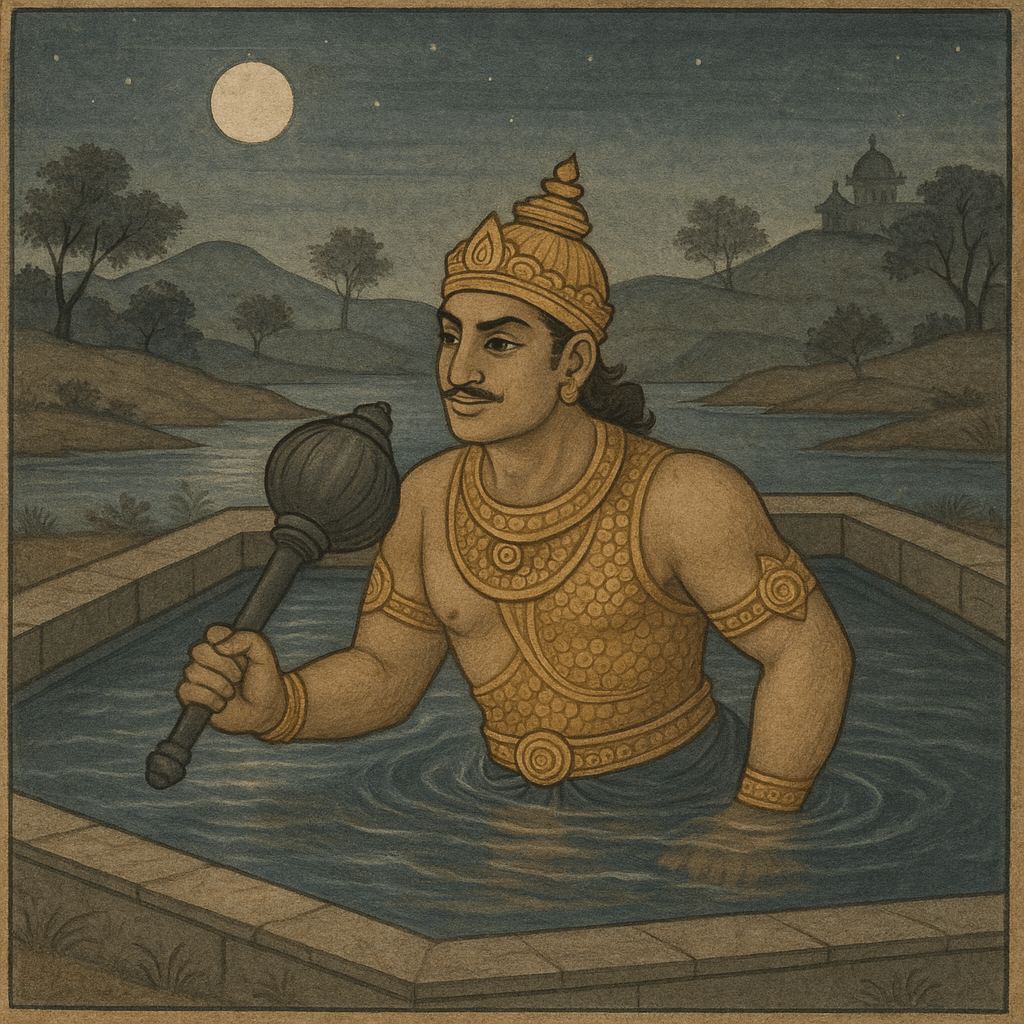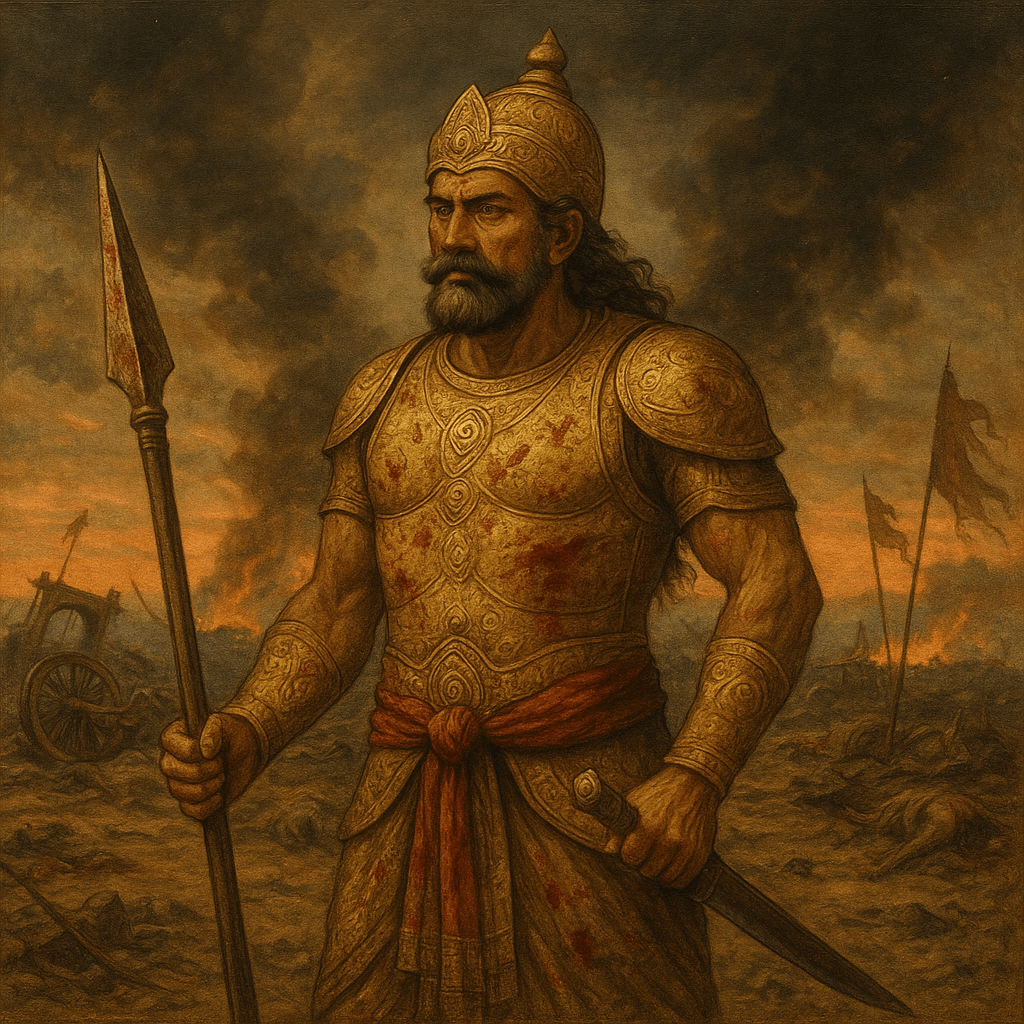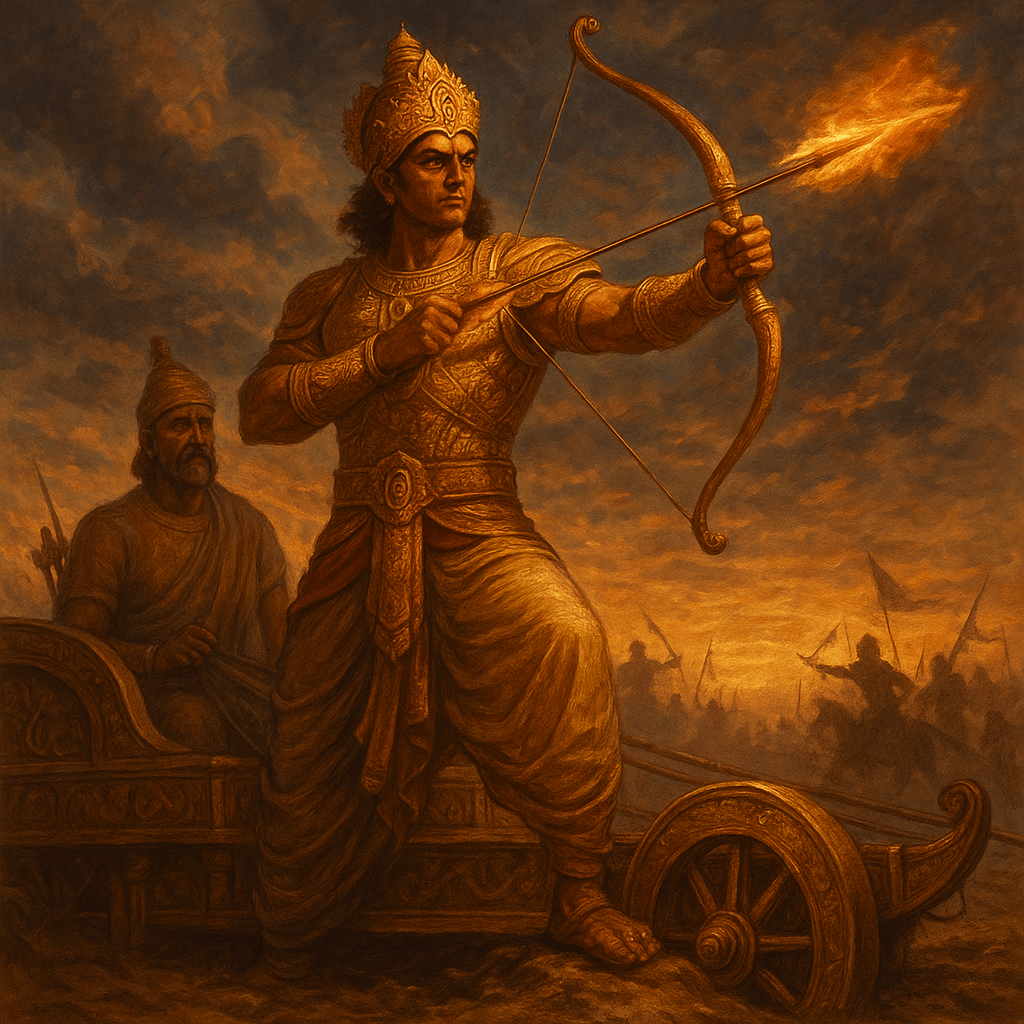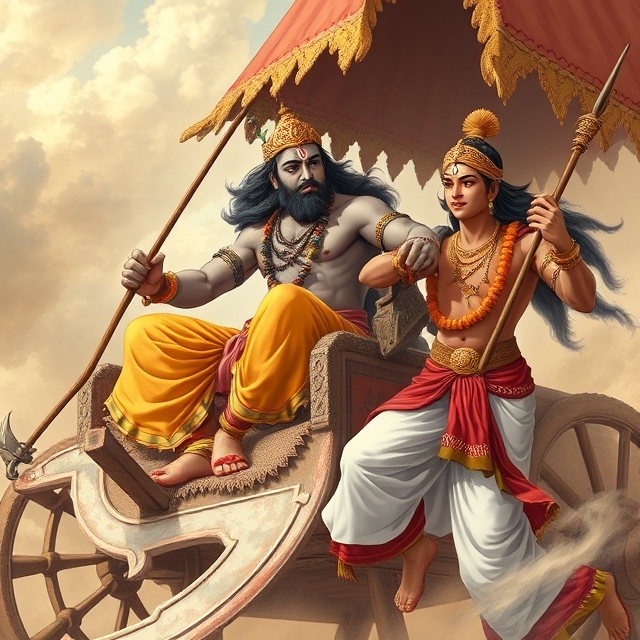Vishoka Parva is the eighty first Upa parva in the eleventh Maha parva named as Stri parva. Vaishampayana continued narration to Janamejaya in reply to his queries as follows.
Who told Gandhari about the fall of Duryodhana?
Yudhishtira requested Krishna to meet Gandhari and inform her about the fall of Duryodhana. Krishna was an expert in speaking, hence he went to the Palace in his chariot and informed Gandhari and Dritarashtra about the fall of Duryodhana.
Krishna praised both Gandhari and Dritarashtra for some time on the night of the eighteenth night. When they heard the fall of Duryodhana, they started weeping. Krishna consoled them.
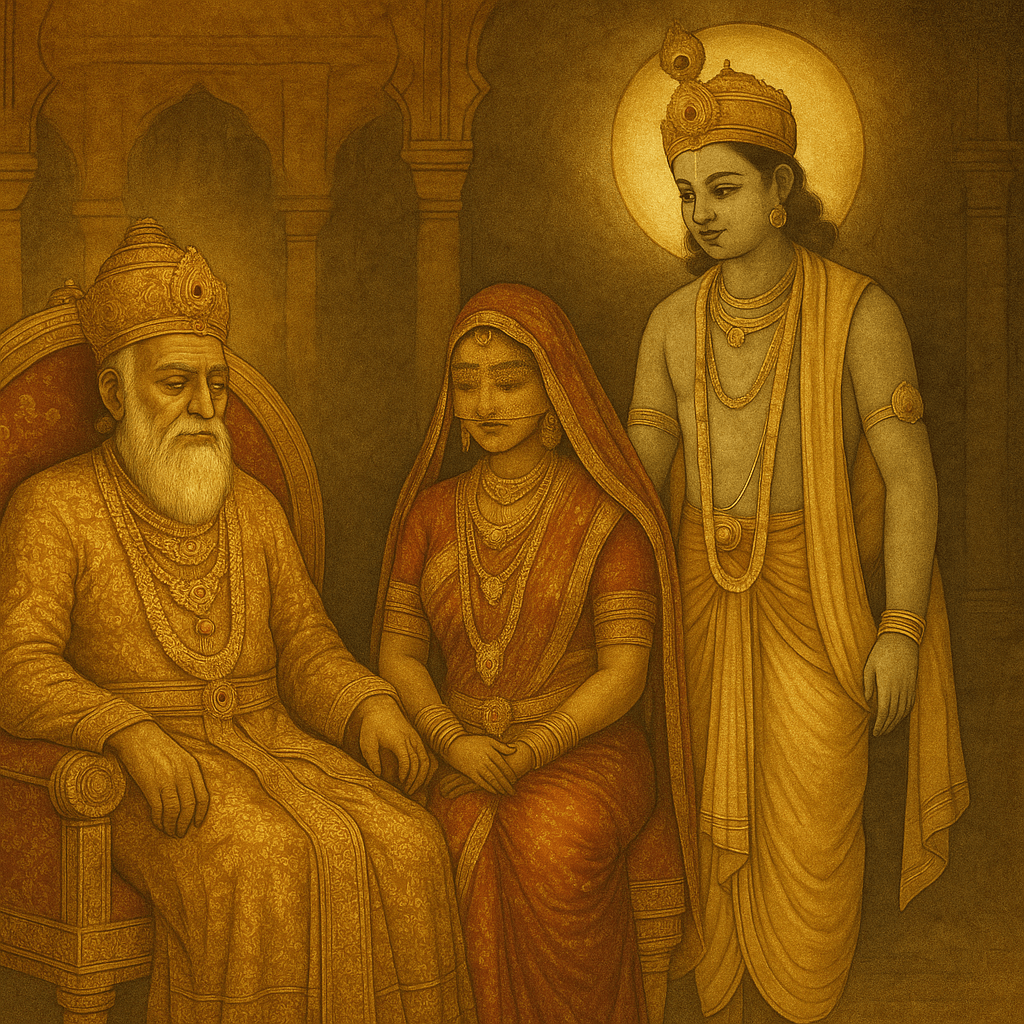
Since Duryodhana had announced it as a happy end for him, Krishna told Gandhari about the same and told her he was shining as the emperor till his last moment.
What did Krishna tell to Kripa?
Then, all the palace ladies started crying. Krishna later informed Kripa that the Pandavas would be coming to the Palace with their wives on the next day morning. It would be the nineteenth day morning.
Kripa had arranged to receive them all on the next day morning. Then, the war had ended so they tried to sleep peacefully.


